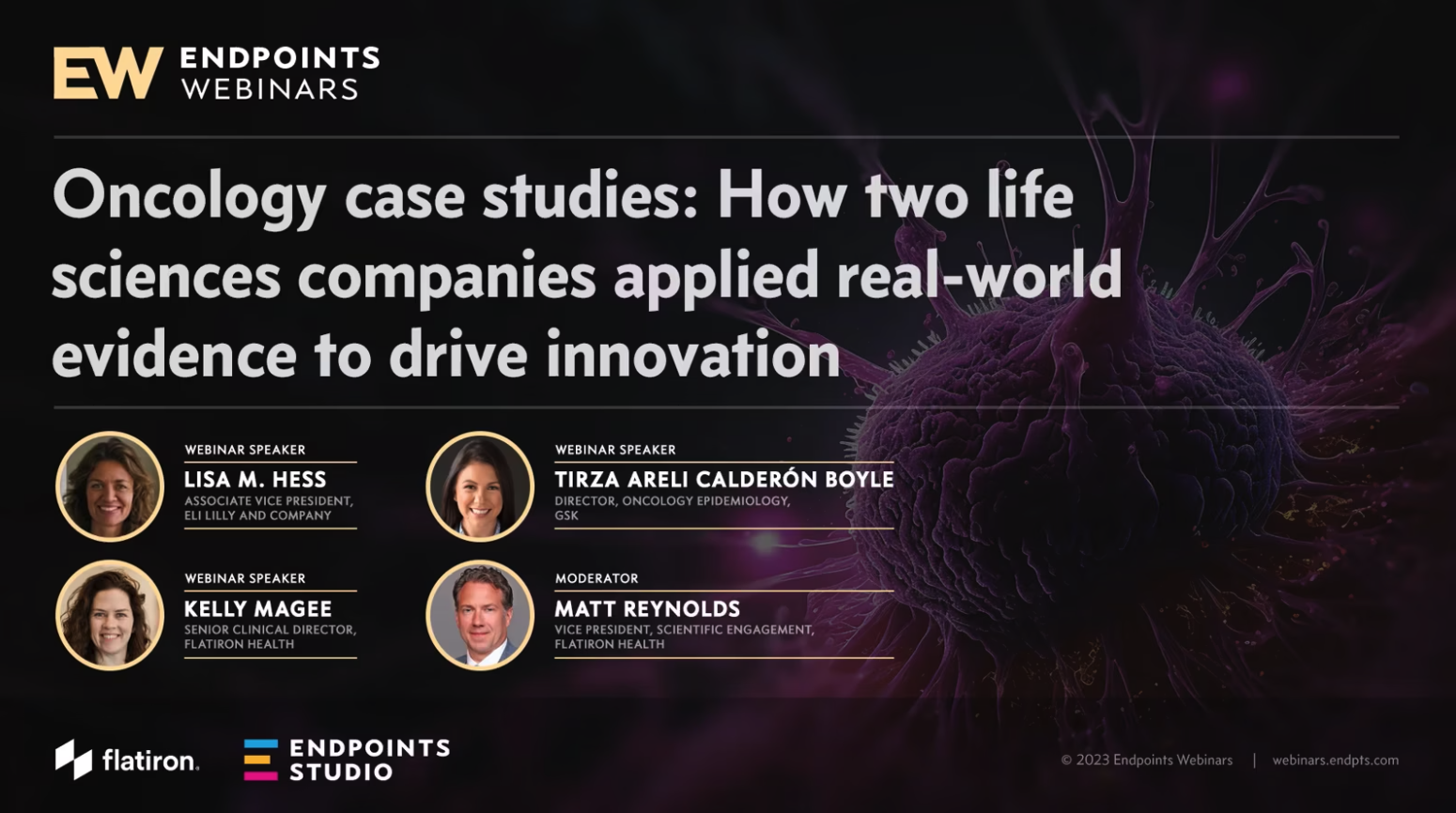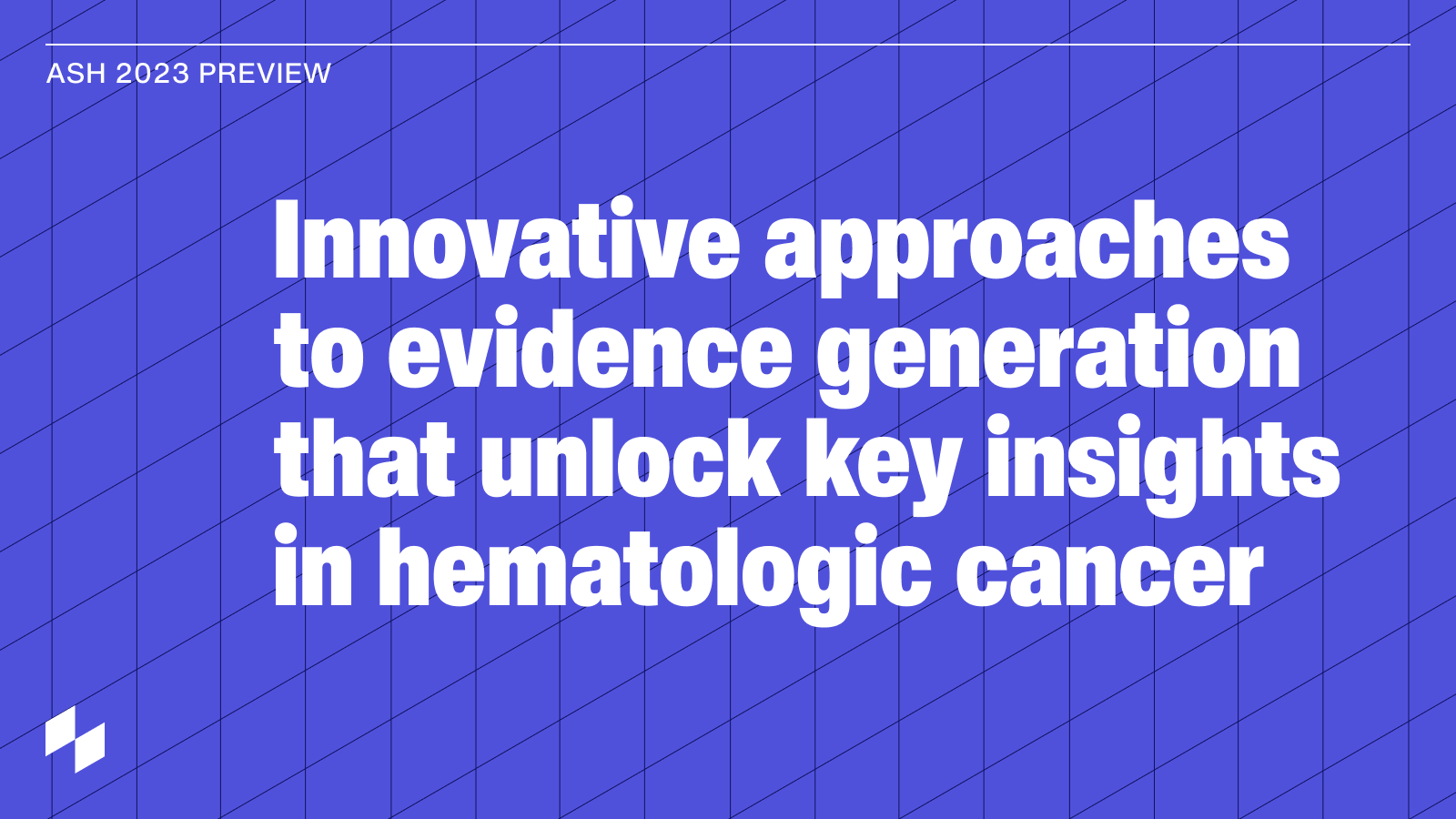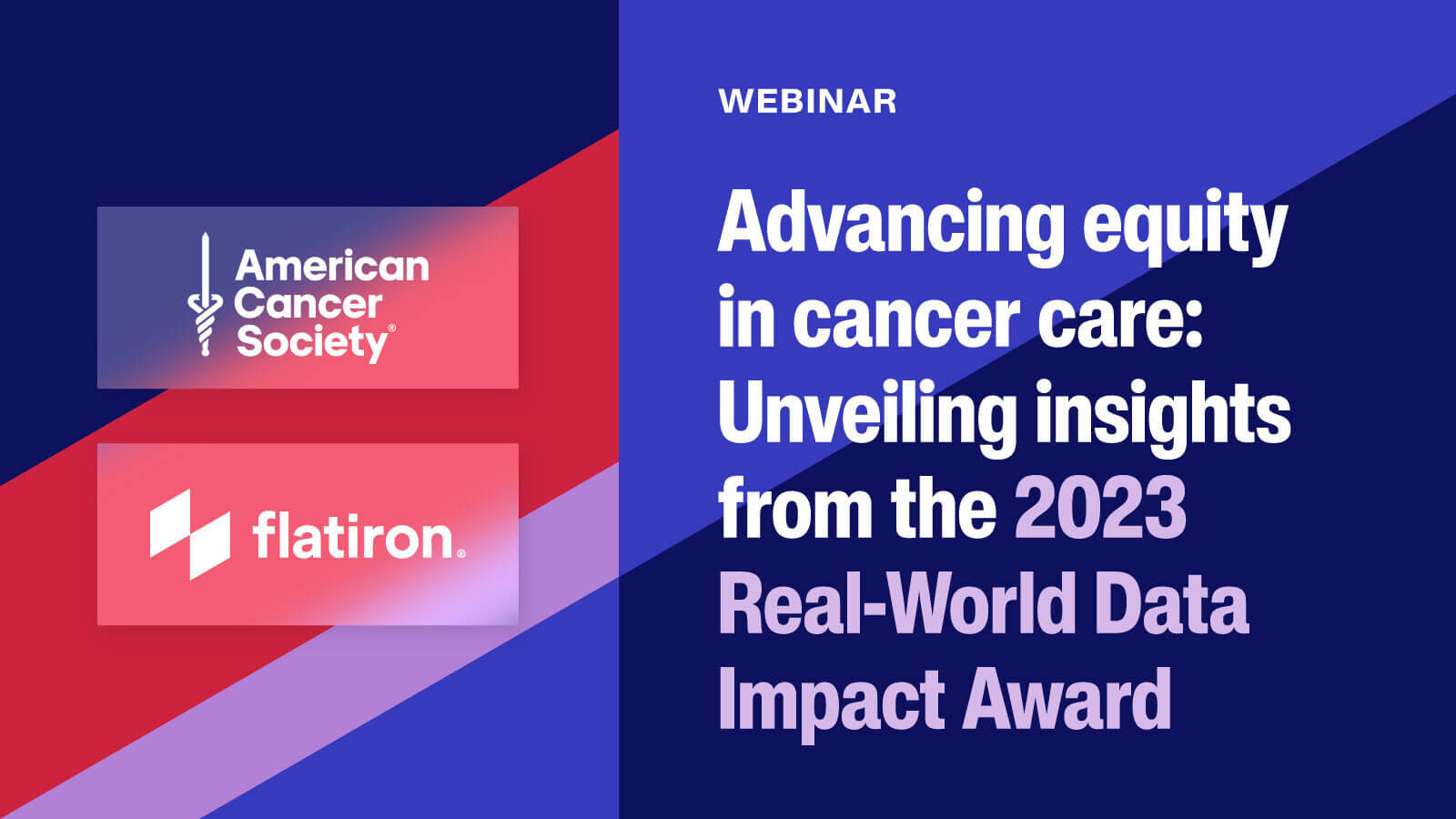This talk is part of the ResearchX session: Beyond synthetic controls: Near-term opportunities for regulatory RWE.
Sections include:
- Near-term opportunities to leverage RWE for regulatory use
- Using RWD to provide natural history information
- Using RWD to fill evidence gaps in the post-approval space: New dosing regimen for cetuximab

Transcript
Pranav Abraham: Welcome, everyone. I'm Pranav Abraham, part of the Worldwide Health Economics and Outcomes Research Hematology Team here at Bristol Myers Squibb. Though I'm part of the Hematology Team now, over the past several years, I've had the opportunity to lead multiple solid tumor indications, and the work that I'll be presenting today has been a part of my previous role. So before I start, today, I have the privilege to present a case study on how we were able to generate real-world data as natural history information and strengthen our regulatory filing in the US for second line esophageal squamous cell cancer. I would like to acknowledge that the strategy, execution, and outcome of this filing was due to a larger team effort. And though I have the opportunity to present this today, I would like to recognize all my colleagues that were involved in this work stream. Next slide. Thank you. So before I jump right in, just to provide everybody some context. First, why was there a need for real-world data during a regulatory filing for esophageal squamous cell cancer? Let me walk you through some of the key aspects of this clinical trial design, which is ATTRACTION-3. So ATTRACTION-3 was a phase three randomized study of nivolumab versus docetaxel monotherapy in patients with esophageal squamous cell cancer, who were either refractory or intolerant to fluoropyrimidine and platinum-based combination chemotherapy. All the 419 patients in the clinical trial had a performance status of 0 or 1, were randomized into two treatment arms as you see.
210 patients received nivo while 209 received taxane monotherapy. All patients in this study continued treatment until progression, all conditions that were unacceptable in view of their safety. The primary objective of this trial was to assess overall survival and compare it among treatment arms. I won't go over all the other endpoints. They have been listed right below. So this trial, when it read out, showed that patients treated with nivo monotherapy had superior overall survival compared to those patients that received taxane monotherapy, which is either docetaxel or paclitaxel. Now, the challenge here was that this trial only had 18 Western patients out of a total of 419. Although the trial was designed and conducted as a global trial, delays in site activations, coupled with low prevalence of the disease in participating Western countries resulted in a very limited number of patients enrolled outside of Asia. So we as a team within BMS anticipated questions from regulatory bodies around the applicability of ATTRACTION-3 to Western countries, and hence, our objective was to showcase the relevance of ATTRACTION-3 clinical trial results to medical practice here in the U.S., by supplementing it with U.S. real-world data. Next slide. So before we started analyzing any of these multiple available real-world datasets, we wanted to first identify some key evidence gaps, and we identified that very few articles reported real-world outcomes for esophageal squamous cell cancer. And I particularly remember back during that time in 2019, there was no study that reported U.S. real-world outcomes for esophageal squamous patients. And this could mainly be because the prognosis for this disease was found to be very poor, and the fact that esophageal adenocarcinoma is more prevalent than squamous cell carcinoma here in the U.S., and likely in Western countries.
At that point in time, I also remember there was no standard of care in second line. Real-world outcomes for these patients were uninvestigated, and there was a need to characterize the treatment patterns and compare outcomes for patients treated in line with NCCN guidelines with those from ATTRACTION-3. Hence, our key research questions focused on better understanding the clinical characteristics, treatment patterns, survival outcomes among all patients who received two or more lines of therapy. This is among esophageal squamous cell cancer patients. It was also critical to compare overall survival of advanced or metastatic patients who received second-line taxane therapy with those who received non-taxane second-line therapy, and this was particularly done because chemotherapy patient cohorts in ATTRACTION-3 were randomized to only receive taxane monotherapy or nivo monotherapy. Next slide.
So using the Flatiron dataset, we conducted a retrospective analysis. First, we identified all patients being treated in the U.S. for advanced metastatic disease, specifically esophageal squamous cell cancer. I remember we identified close to 300, 350 patients. I see that the number is not here, but again, since second line is the focus, we found 86 esophageal squamous cell cancer patients treated with second-line therapies between 2011 and 2019. And these 86 patients matched our inclusion-exclusion criteria, which the main ones have been listed below. I won't be going over them one by one in interest of time, but I would say that to the extent possible, we ensured that this cohort resembled patients in ATTRACTION-3. We then further classified patients that received second-line therapy into two buckets, patients that received taxane-based treatment. This was specifically done in line with the then NCCN guidelines.
Just to provide more perspective, if I may take your attention to the table on the right, the key characteristics and outcomes from both our ATTRACTION-3 trial and Flatiron data analysis, you will find that the median age, the proportion of males across the taxane arms in ATTRACTION-3, and the Flatiron data analysis were found to be very comparable. We also found that the majority of patients in the Flatiron dataset were Caucasians. This meant that the characteristic makeup of patients with advanced or metastatic squamous cell carcinoma in the East and the U.S. can be very similar. When I move on to outcomes, when you look at the median survival from initiation of second-line treatment, it was found to be 6.7 months for all second-line patients, whereas it was comparable, which is 8.4 months among patients receiving taxane therapy in ATTRACTION-3, and 7.3 months among those receiving taxane therapies in the Flatiron dataset.
Even when we compare the landmark survival, let's say assessed at the 12-month mark, a similar proportion of patients that is 34% in the taxane arm in ATTRACTION-3 were alive compared to 24% in the taxane cohort in the real-world Flatiron dataset. Now, when these proportions were compared to the proportion of nivo patients alive at month 12, the benefit of nivo monotherapy was quite evident and was found to be superior. So these results in a whole gave us confidence that survival, first of all, could be comparable across regions, at least in the advanced metastatic stage esophageal squamous cell carcinoma. They also highlighted those patients in the ATTRACTION-3 trial that received nivo had superior outcomes, and these clinical trials could be applicable to U.S. medical practice. Next slide.
So what did we really learn from carrying out these analyses and how did it really make an impact for patients? Let me highlight some key insights. First, only a quarter to a third of patients treated in frontline after diagnosis of advanced or metastatic disease for esophageal squamous cell cancer went on to get second line treatment. So that's a very small proportion. Now, with such a small proportion moving on to later lines of treatment, coupled with poor survival outcomes of existing treatment options, this showed that outcomes of palliative chemotherapy for advanced disease were only modest and offered very poor, long-term survival. This helped us to highlight an urgent unmet need for new treatment options in the setting, which is the second line. I personally feel that real-world evidence can certainly strengthen, provide more perspective to clinical trial results, which can aid in better clinical decision making.
In our case, it showed that demographics and clinical characteristics of ESCC patients with advanced disease were comparable across Asia and the U.S. So regardless of region or ethnicity, advanced ESCC was an aggressive disease and is associated with poor prognosis. Now, to move on to the impact we were able to have with these real-world data analyses, these Flatiron analyses, along with other real-world analyses that we had conducted, strengthened our U.S. regulatory filing, which ultimately led to nivo being approved in June 2020. This was the first and I believe still remains the only IO therapy approved in the U.S. for second-line esophageal squamous cell cancer, regardless of PD-L1 expression. So that sums up my presentation and how we were successfully able to use real-world data in our interactions with regulatory bodies and in our submission package. I would now pass it on to Chris to introduce the next presenter.


